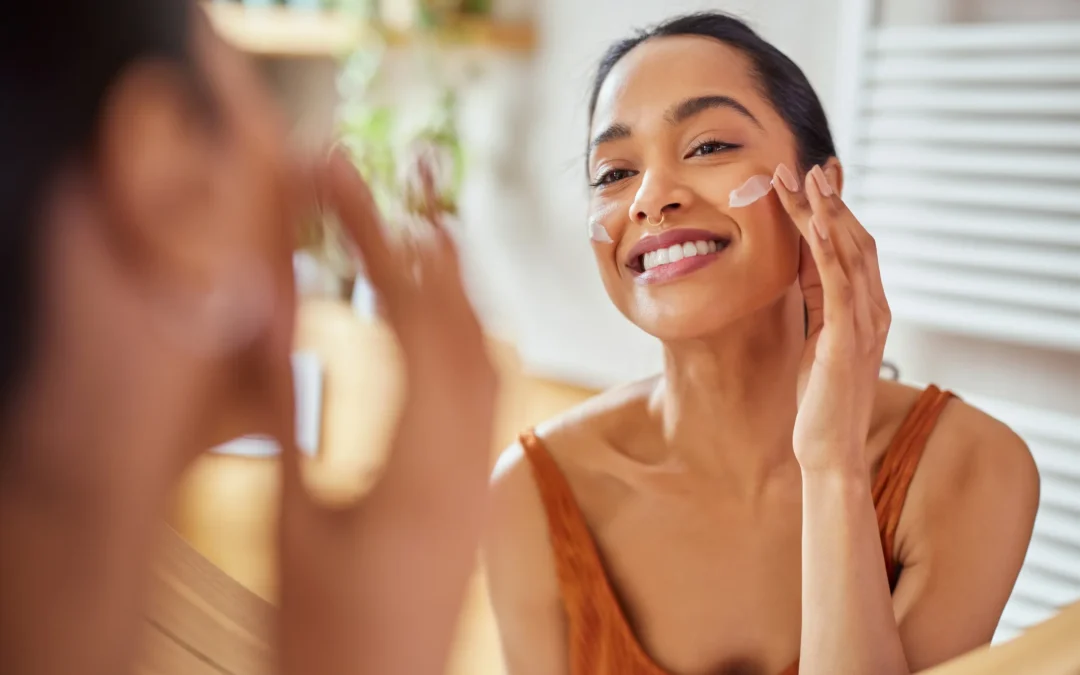Summer is here—are you protecting your skin? We all know sunscreen shields us from harmful UV radiation, but are you using it correctly? Proper sunscreen application can prevent early aging and skin cancer. Did you know that 1 in 5 Americans will develop skin cancer in their lifetime, according to the American Academy of Dermatology? Before you head out this summer, let us uncover the facts and debunk the myths about sunscreen.
Myth 1: All Sunscreens work the same, so it does not matter which one you choose.
This is false. Different types of sunscreens protect your skin in various ways. While it is always important to wear sunscreen, following the specific instructions for each type is crucial to ensure proper protection.
Chemical sunscreens absorb UV rays before they penetrate the skin, while mineral sunscreens create a barrier on the skin’s surface that reflects UV rays. Not sure which type is right for you? Choose a broad-spectrum product with an SPF of at least 30 to protect against both UVA and UVB rays.
Sunscreen comes in various forms—spray, cream, powder, and stick. The key is to apply it correctly according to the directions. Each type has its benefits and limitations, so read the instructions carefully to know how often and how to apply it for maximum effectiveness.
Myth 2: Higher SPF provides significantly more protection.
While a higher SPF does offer more protection, it is important to understand that no sunscreen blocks 100% of UV rays. For example, SPF 100 only blocks 1% to 2% more UV radiation than SPF 30.
SPF also does not determine how long you are protected. Regardless of SPF, you need to reapply sunscreen regularly. Always follow the instructions on the label to know when to reapply, typically every two hours. If you are swimming or sweating, you will need to reapply more frequently, even if the sunscreen is labeled as waterproof.
Myth 3: I don’t burn I only tan, or I have dark skin, so I do not need to wear sunscreen.
Both statements are false. There is no such thing as a “safe tan.” Tanning indicates that your skin has been injured by UV radiation. Even a slight tan damages the skin, accelerates aging, and increases the risk of skin cancer. Additionally, a tan will not protect your skin from sunburn or other sun damage.
It is important to note that all skin tones are susceptible to sun damage, regardless of color. Everyone needs to use sunscreen to protect their skin from harmful UV rays.
Myth 4: Sunscreen never goes bad
This is not true. Sunscreen does expire, and once it passes its expiration date, it loses its effectiveness in protecting your skin from the sun. Proper storage is also crucial to maintain its potency. Avoid leaving sunscreen in hot cars or direct sunlight, as heat and light can degrade the product. Always follow the storage recommendations on the sunscreen bottle for the best results.
Myth 5: You only need sunscreen when it is summer, or the sun is out.
This is false. Even on cloudy days, your skin is exposed to UV radiation. A good rule of thumb is if the sun is up and you are outside, you need sunscreen. Additionally, surfaces like water, sand, and snow reflect sunlight, increasing your exposure to UV rays. Sunscreen is a year-round necessity, regardless of the weather or season. Always apply it to protect your skin.
As we have uncovered, there are many misconceptions about sunscreen that can lead to improper use and increased risk of skin damage. Understanding the facts is crucial to ensuring you are adequately protected. Always remember to apply sunscreen and reapply it as needed to protect your skin from the harmful effects of UV radiation. If you have any questions about sunscreen or are suffering from a sunburn, contact Jovive Health for expert advice and care.


